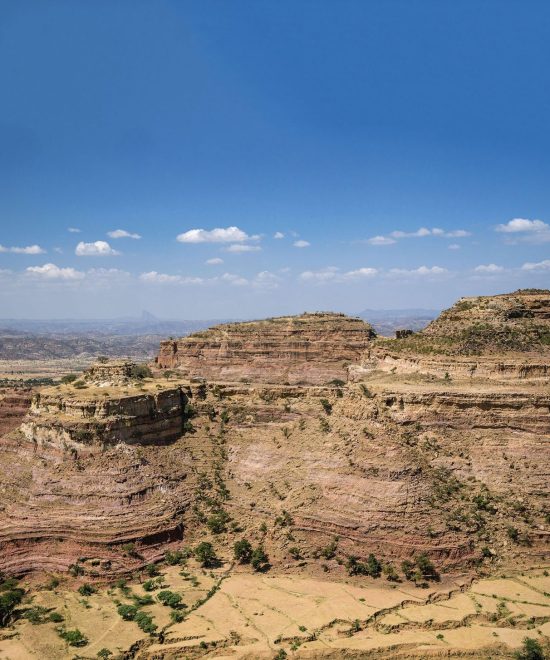Northern Ethiopia
- Home
- Northern Ethiopia
Northern Ethiopia
Ertale
This imperative site is also important as it has an immense ground of salt dipostion which is the source of income of the Afar,since they skillfully mine the saline to supply the country with edible salt. benize this wide carpet of salt is an extensive source of volcanic hit that results babbles of hot water to rise through layers of salt and anhydrite deposit. the never tiring nor non-cooling lava lake at Erta-Ale, one of the stunning place in Afar,boiles it self and at times it spew out small amount of lava to fall shield volcano with an enjoyable colorfull land scapes of reds, browns and yellow, that form captivating fumaroles, amazing rock formations of crystal and mineral deposits across the land. Studies record that the place had experienced large volcanic irruptions until about fourty years ago, yet the continues activate of the lava prevents explosive irruptions. Situated the North east of Ethiopia in a regoin specially in the Afar region, Denakil Depuration is supposed the most challenging site in Ethiopia.
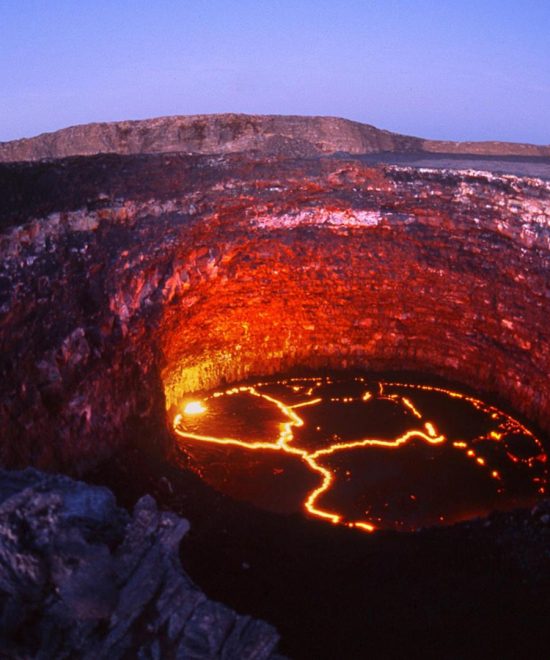
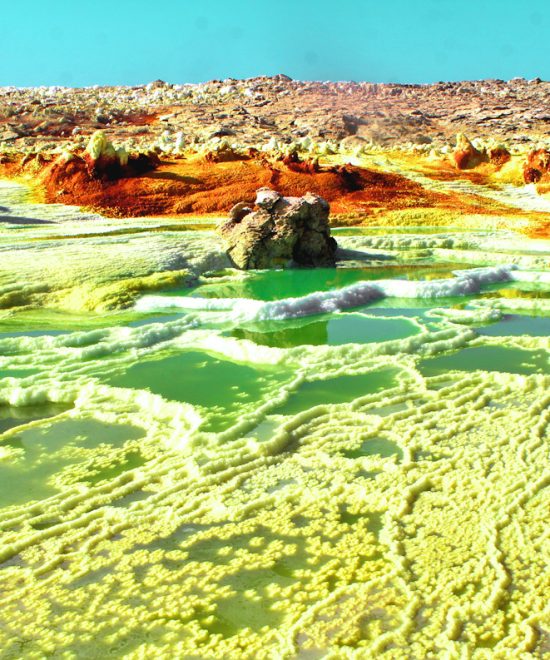
Dallol
Dallol is a soot cone well of lava in the Danakil Depression, despite the fact that its exceptional topography implies it comes up short on of the model volcanic looks. All things considered, Dallol is a material of radiant green, reds, and yellows conveyed across many hot acidic springs and hills of salt stores. The aqueous movement underneath the Dallol cavity is liable for this colorful scene. As groundwater diffuses opposite the high countries, it is warmed by the magma underneath Dallol and pushed through the cavity, dissolving salts and different minerals simultaneously. These minerals oxidize to make beautiful, supersaturated natural aquifers. The extraordinary hotness of the Danakil then, at that point, vanishes the water, leaving behind brilliant salt arrangements that separate the springs. The wild Dallol scene is the consequence of progressing geographical cycles, and that implies Dallol is a very powerful scene, with new springs and salt arrangements emerging constantly. Albeit comparable in appearance to the brilliant strings of America’s Yellowstone National Park, Dallol tones emerge from inorganic, geographical cycles, rather than organic ones. The exceptional hotness of the Danakil Depression, joined with the outrageous convergences of salts, potash, and different minerals in the natural aquifers makes Dallol a superb exploration ground for poly extremophile microorganisms, which might hold hints regarding how life started on Earth, and how life may exist on different planets like Mars.
Lalibela
Lalibela is a town in the Amhara Region of Ethiopia, located in the Lasta district and North Wollo Zone. It was once the capital of the Zagwe dynasty and was renamed from Roha to Lalibela after a distinguished monarch from the dynasty.
The site is known for its 11 rock-hewn churches, which were designated a UNESCO World Heritage site in 1978. These churches were carved from a single piece of rock to symbolize spirituality and humility. The layout and names of the major buildings in Lalibela are widely accepted, especially by local clergy, to be a symbolic representation of Jerusalem.
Lalibela is considered one of Ethiopia’s holiest cities and a center of pilgrimage. The whole of Lalibela is a large and important site for the antiquity, medieval, and post-medieval civilization of Ethiopia. The churches themselves date from the 7th to 13th centuries, and are traditionally dated to the reign of the Zagwe (Agaw) king Gebre Mesqel Lalibela (r. ca. 1181–1221).
The town is situated roughly 2,500 metres (8,200 ft) above sea level. It’s also a tourist site for its famous rock-cut monolithic churches.
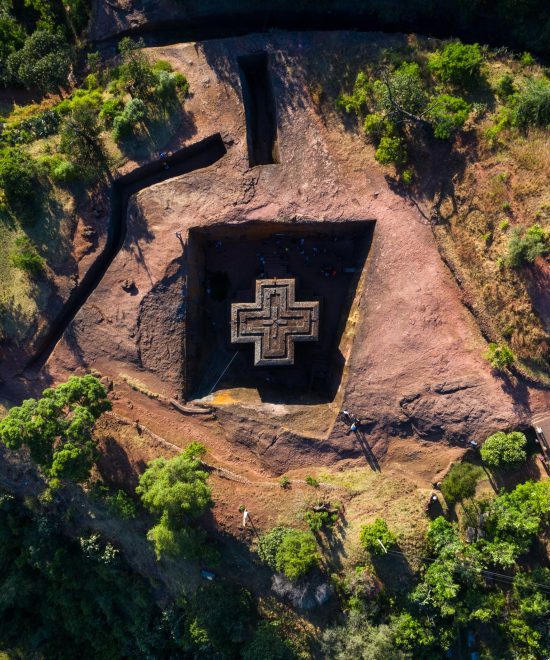
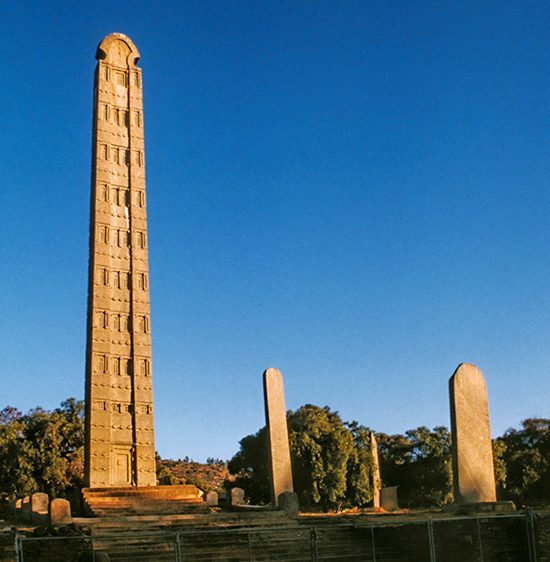
Aksum
The Obelisk of Aksum is a towering monument located in the city of Axum in Ethiopia. It dates back to the 4th century CE. This phonolite stele, standing at approximately 79 feet tall and weighing around 160 tonnes, is intricately carved to represent a nine-story building of the Aksumites. The obelisk is positioned at the entrance of the main stelae area and is a unique masterpiece of human creative genius. It symbolizes the wealth and importance of the ancient Aksumite kingdom, which thrived from the 1st to the 8th centuries AD. This kingdom controlled a large territorial state and had access to vast trade routes linking the Roman Empire to the Middle East and India. The largest obelisk, which is some 33 meters long, lies where it fell, perhaps during the process of erection.
Bahirdar
Bahir Dar is a beautiful city located on the shore of Lake Tana, 578 kilometers away from Addis Ababa, Ethiopia. It serves as the capital city of the Amhara region and is a major gateway to northern Ethiopia due to the presence of the Bahir Dar Belay Zeleke international airport. The city is crossed by the Blue Nile, which originates from Lake Tana.
Traveling between Addis Ababa and Bahir Dar is quite common, with Ethiopian Airlines offering regular flights between the two cities. The distance between Addis Ababa and Bahir Dar is approximately 322 kilometers or 200 miles.
Bahir Dar is known for its pleasant climate, historical sites, and natural beauty, making it a popular destination for both local and international tourists
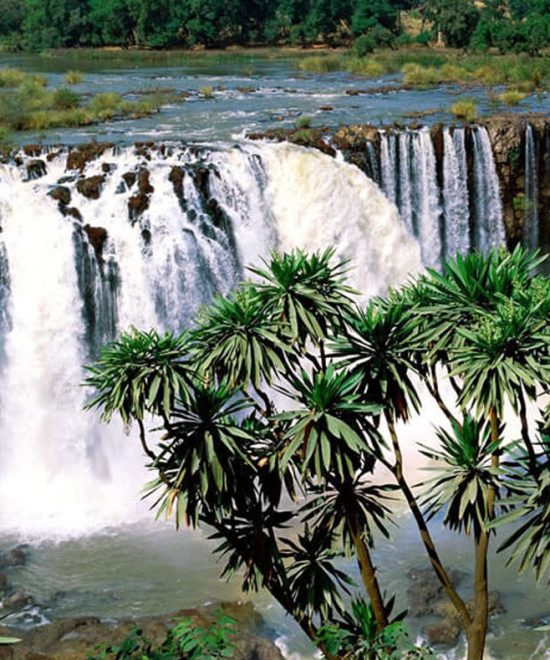
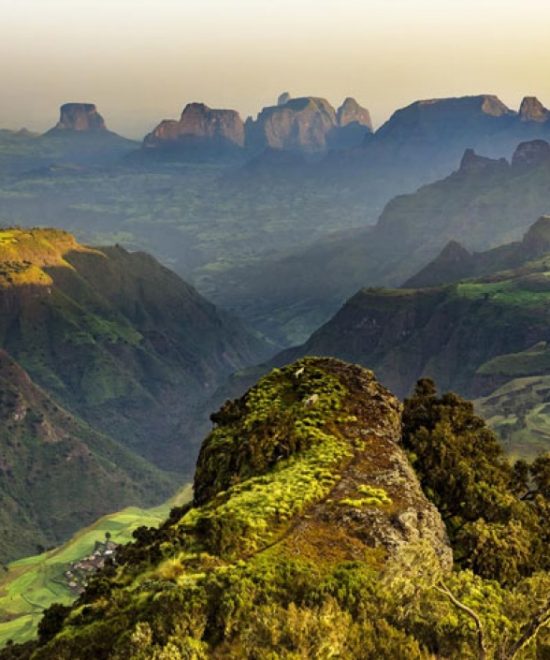
Simien Mountain
The Simien Mountains, also known as the Seimen Mountain, are located in the northern part of Ethiopia, northeast of Gondar in the Amhara Region. They are not located in Addis Ababa, but are a significant distance away. The mountains are part of the Ethiopian Highlands and have been designated as a UNESCO World Heritage Site.
The Simien Mountains National Park, often referred to as the “Grand Canyon of Africa,” is a popular destination for trekking and walking. The park is home to some of the world’s most spectacular landscapes, with jagged mountain peaks, deep valleys, and sharp precipices dropping some 1,500 meters.
The highest peak in the range is Ras Dejen at 4,550 meters. Other notable peaks include Kidis Yared at 4,453 meters and Mount Biuat at 4,437 meters. The mountains are also home to rare animals such as the Gelada baboon, the Simien fox, and the Walia ibex.
The Simien Mountains were formed from lava outpourings between 40 and 25 million years ago during the Oligocene period. The dramatic views are due to this volcanic activity. The mountains are one of the few spots in tropical Africa where snow regularly falls.
Overall, the Simien Mountains offer a unique combination of natural beauty, rich history, and diverse wildlife.
Gheralta
Gheralta, located in the northernmost region of Ethiopia, is a place of breathtaking beauty and historical significance. The Gheralta Mountains are a striking feature of the landscape, with their precipitous cliffs and rugged terrain. These mountains are not just a natural wonder, but also a spiritual sanctuary, as they are home to ancient, inaccessible churches that have been hewn directly into the mountainsides.
The Gheralta region is home to more than 30 structures, some of which are over a thousand years old. These rock-hewn Ethiopian Orthodox cave churches are some of the country’s least visited due to their challenging locations. However, those who make the ascent are rewarded with a glimpse into a rich history and spiritual tradition.
One of the better-known churches in the area is Abuna Yemata Guh. This church is carved into a tall sandstone pinnacle and is accessed by a cliff face. Despite its remote location, it has been expanded over time into a sprawling series of caves, all illuminated by dim flickering candles.
The Gheralta Mountains offer more than just historical and religious sites. The sandstone cliffs provide plenty of hiking opportunities, and the area’s thick, arid air and vast wilderness make it an adventurer’s paradise. Despite the barren landscape, the red rock mountains conceal one of Ethiopia’s hidden gems – a complex of ancient monasteries and temples waiting to be discovered.
In addition to its natural and historical attractions, Gheralta also offers cultural experiences. The local people have a unique way of life and religious practices that add to the region’s charm.
In summary, Gheralta is a place where history, nature, and culture intertwine to create an unforgettable experience for those who venture there.
